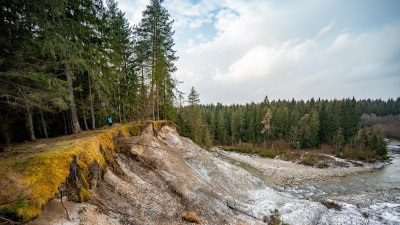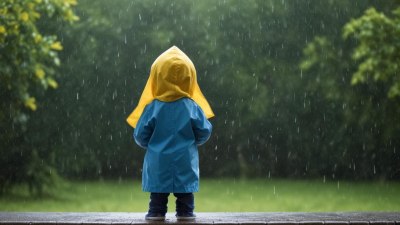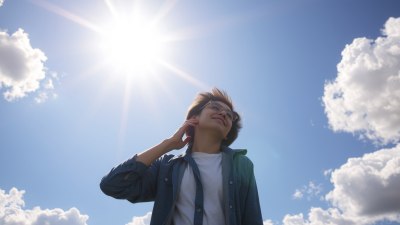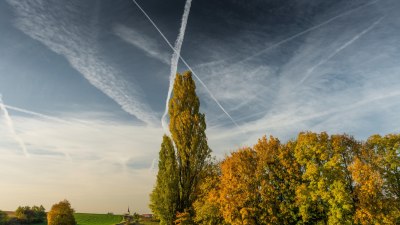Why Some Summers Have No Rain at All The Blocking High Mystery
Explore the phenomenon of blocking highs and their impact on summer rainfall patterns.

Many people eagerly anticipate summer, picturing long days filled with sunshine, barbecues, and time spent outdoors. However, some summers can be marked by a surprising lack of rainfall, leading to drought conditions and impacting agriculture, water supply, and ecosystem health. This intriguing weather phenomenon often results from the presence of a ‘blocking high,’ a persistent area of high pressure that can significantly alter weather patterns. In this article, we will delve into the science behind blocking highs and why they sometimes lead to rain-free summers.
Understanding Blocking Highs
A blocking high, or a blocking anticyclone, is a large area of high atmospheric pressure that develops in the mid-latitudes. Its defining characteristic is its longevity; blocking highs can remain stationary for days or even weeks. This stability disrupts the normal west-to-east flow of weather systems, creating a barrier that alters the usual pattern of storms and precipitation. As a result, regions under the influence of a blocking high may experience extended periods without rain.
The Formation of Blocking Highs
Blocking highs typically form in the summer months when the sun heats the Earth's surface, creating temperature gradients that affect atmospheric pressure. These highs are often linked to the movement of the jet stream, which is a high-altitude river of air that can influence weather patterns. When the jet stream takes on a meandering pattern, it creates areas of high pressure that can become stationary, leading to a blocking high. This can occur due to various reasons, including the presence of a strong ridge in the jet stream, seasonal temperature fluctuations, and even atmospheric waves.
The Effects of Blocking Highs on Weather
The most significant effect of a blocking high is its ability to inhibit the development and movement of storms. In regions affected by a blocking high, moisture-laden air is often unable to move in from the oceans, leading to dry conditions. The air is usually sinking, which prevents cloud formation and precipitation. This can create an environment of persistent heat and dryness, ultimately resulting in the infamous rainless summer.
Historical Examples of Rainless Summers
There have been several notable incidents in history where summers have experienced no rain due to the effects of blocking highs. For example, in 2012, much of the United States experienced an extreme drought, particularly in the Midwest and Great Plains. This was largely attributed to an extensive blocking high that prevented moisture from moving into the region. Similarly, in 1976, the UK faced a severe drought that many attributed to the presence of blocking highs during the summer months, leading to the driest summer on record for several regions.
Regional Variations in Rain Patterns
The impact of blocking highs on summer rainfall can vary widely from one region to another. In some areas, the summer heat may promote the development of thunderstorms that can bring occasional rain, even when a blocking high is present. Conversely, regions that are typically reliant on summer monsoons may find themselves severely impacted when a blocking high suppresses these critical moisture-laden systems. Regions such as the southwestern United States are particularly vulnerable, as these areas often depend on the summer monsoon for their water supply.
Climate Change and Blocking Highs
As global temperatures rise due to climate change, researchers have noted a potential increase in the frequency and intensity of blocking highs. Warmer air can hold more moisture, which can lead to intense precipitation events in some regions while simultaneously causing droughts in others. This paradox highlights the complexity of climate systems and the unpredictable consequences of climate change. Studies suggest that blocking highs may become more prevalent as climate patterns shift, ultimately affecting summer rainfall patterns across the globe.
Mitigating the Effects of Drought
When summers arrive without rain, communities must take action to mitigate the effects of drought. Water conservation practices become critical during these times, as individuals and businesses alike must adapt to reduced water supplies. Agriculture, in particular, may struggle during a rainless summer, leading to crop failures and economic hardship. Farmers may turn to irrigation to compensate for the lack of natural rainfall, which can strain local water resources.
Preparing for Future Summers
Understanding the phenomenon of blocking highs and the potential for rainless summers allows for better preparedness and planning. Communities can implement water management strategies, investing in infrastructure aimed at retaining and utilizing rainwater efficiently. Additionally, education on drought-resistant crops can help farmers adapt to changing weather patterns and ensure food security in the face of uncertain rainfall.
The mystery of why some summers experience little to no rain is closely tied to the behavior of blocking highs and their impact on atmospheric dynamics. These high-pressure systems can create significant consequences for weather patterns, agriculture, and the environment. As climate change continues to influence our weather systems, understanding these patterns will become increasingly crucial for mitigating their impacts. By being proactive and informed, we can navigate the challenges presented by blocking highs and prepare for the possibility of rainless summers in the future.











